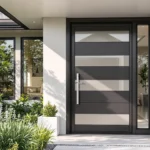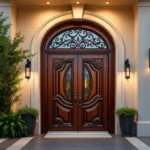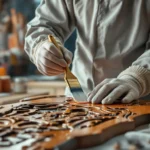Finding the perfect palette knife can transform your painting experience from ordinary to extraordinary. We’ve spent countless hours testing dozens of options to bring you the definitive guide to the best palette knives available today.
Whether you’re creating bold texture in oil paintings or delicately mixing acrylics, choosing the right tool makes all the difference. The ideal palette knife balances flexibility, durability, and comfort—qualities that separate professional-grade instruments from disappointing alternatives. We’ll help you navigate the options to find the perfect match for your artistic style and medium.
Understanding the Importance of a Quality Palette Knife in Painting
A quality palette knife serves as an extension of your artistic vision, transforming ordinary paint into textured masterpieces. Artists who use premium palette knives immediately notice the difference in control, precision, and expression their artwork exhibits. The weight, balance, and construction of a professional-grade palette knife allows for techniques that simply aren’t possible with inferior tools.
Material quality dramatically affects your painting experience, with stainless steel blades offering superior paint manipulation compared to plastic or lower-grade metals. Professional artists consistently report that high-carbon stainless steel knives maintain their shape longer and provide cleaner edges when creating defined lines or scraping techniques.
Flexibility plays a crucial role in palette knife performance, determining how well you can achieve delicate textures versus bold impasto effects. We’ve found that knives with moderate flexibility offer the most versatility across different painting styles and mediums, while specialized techniques might require either more rigid or more flexible blades.
Ergonomic handle design prevents hand fatigue during long painting sessions, allowing you to focus entirely on your creative expression. Wooden handles with a comfortable grip enable extended use without the cramping commonly experienced with poorly designed alternatives.
The blade shape directly influences the types of marks and textures you can create, making it essential to select the right profile for your artistic style. Varied blade shapes like diamond, oval, or trowel each produce distinctive effects that can elevate your painting technique and expand your artistic vocabulary.
Types of Palette Knives Every Artist Should Know

Understanding the various types of palette knives available can dramatically improve your painting technique and artistic expression. Each style offers unique benefits depending on your preferred medium and desired effects.
Traditional Metal Palette Knives
Traditional metal palette knives remain the most popular choice among professional artists due to their exceptional versatility and durability. Stainless steel models like the Art Spectrum 1090 deliver optimal flexibility while maintaining the strength needed for both mixing and applying paint. These knives typically feature two primary blade designs: spatula knives with straight edges perfect for creating smooth layers across large areas, and trowel knives with wider, flatter blades that excel at developing thick impasto textures. Many artists appreciate the offset handle design found in quality metal knives, as this thoughtful feature keeps your knuckles safely away from wet paint during application. Stainless steel construction also ensures these tools will last for years without rusting or warping, making them a sound investment for serious artists.
Flexible Plastic Palette Knives
Flexible plastic palette knives serve as specialized alternatives for exact painting situations, though they appear less frequently in professional studios. These lightweight tools perform exceptionally well when working with non-stick surfaces or when mixing certain mediums that might react with metal. Plastic variants prove particularly useful for acrylic painters concerned about potential scratching on their mixing surfaces. The flexibility of these knives allows for gentler paint manipulation, which some artists prefer for particular techniques. But, plastic options generally lack the precision and long-term durability offered by their stainless steel counterparts, limiting their application in professional settings where performance consistency matters most.
Specialized Shape Palette Knives
The shape of your palette knife dramatically influences the marks and textures you can achieve in your artwork. Spatula knives feature straight edges that excel at mixing colors and creating broad, sweeping strokes across your canvas. Trowel knives, with their distinctive curved blades, enable artists to develop richly textured, heavy paint applications that add dimensional interest to compositions. Pointed palette knives deliver precision with their sharp tips, making them ideal tools for fine detail work and careful scraping techniques. Rounded knives with blunt edges function beautifully for blending and softening transitions between colors, creating atmospheric effects that would be difficult to achieve with other tools. When selecting specialized shapes, consider how the blade’s flexibility affects your control—stiffer blades work better for scraping and precise application, while more flexible options excel at subtle blending techniques. The size of your knife also matters significantly, as larger blades cover more canvas area efficiently, while smaller versions handle intricate details with greater accuracy.
The 10 Best Palette Knives for Oil Painting
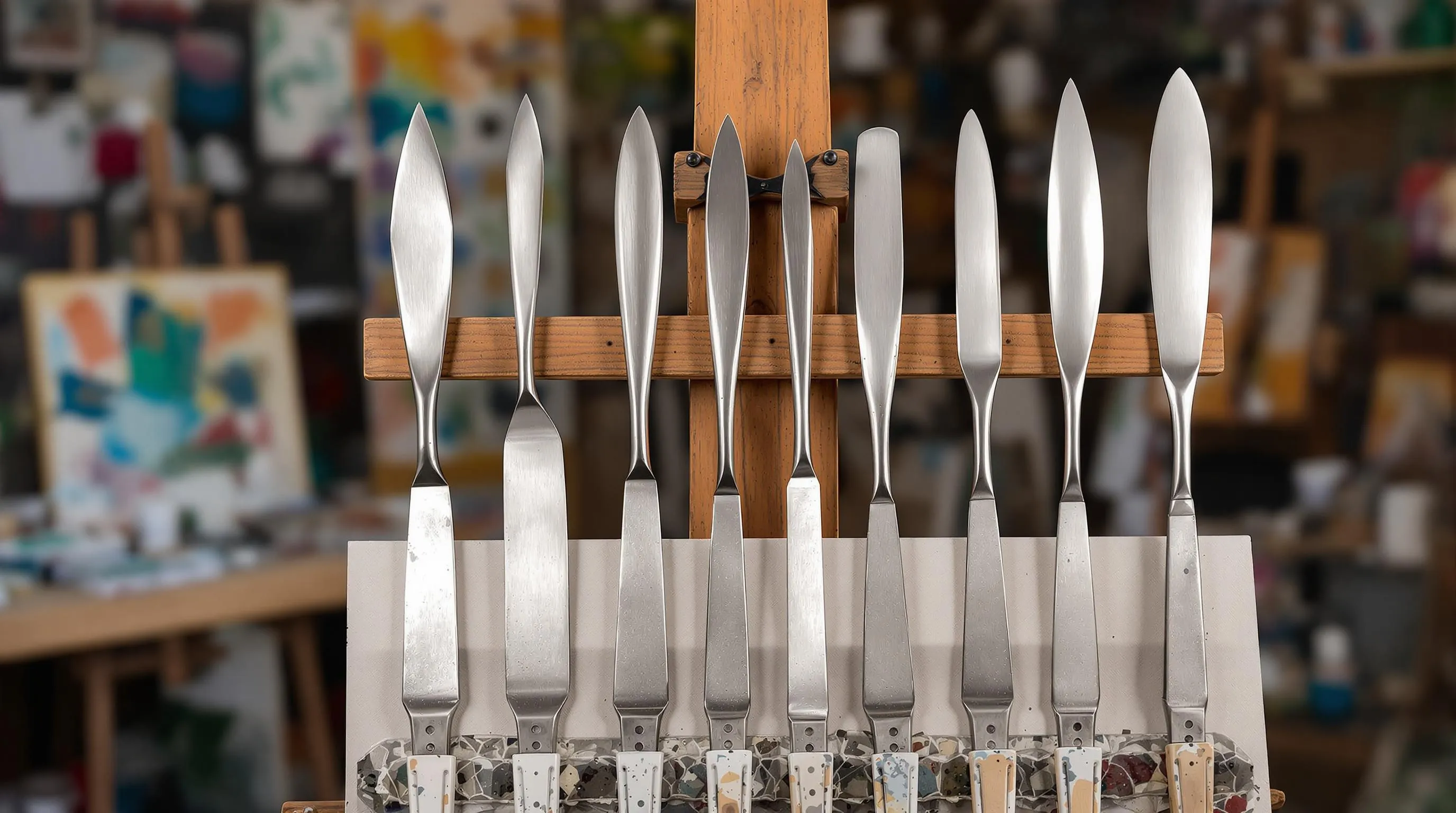
- Trekell Paint Palette Knives
Trekell offers an impressive array of palette knife options that stand out in the market. Their collection includes Multi Angle, Long Spatula, Thin Teardrop, Wide Teardrop, Rounded Teardrop, and Diamond shapes to accommodate various techniques. We particularly appreciate their stainless steel blades with electrolytic protection that prevents corrosion and extends longevity. The ergonomic rubber handles significantly reduce hand fatigue during lengthy painting sessions, while their optimized blade flexibility provides excellent control for precise texturing.
- Art Spectrum 1090
Italian craftsmanship shines through in the Art Spectrum 1090 palette knife. Its rounded tip and remarkably flexible blade make it perfect for artists seeking precision in paint application and color mixing. We’ve found this knife excels at creating smooth transitions and subtle blending effects that many other knives struggle to achieve.
- Holbein MX Series
Japanese-made Holbein MX Series has earned high praise from professional artists for good reason. These knives offer an exceptional balance between durability and performance that few competitors can match. Their well-balanced design reduces wrist strain while providing excellent control, making them ideal for artists who spend hours perfecting their oil paintings.
- Long Spatula Style Knives
Long Spatula knives serve as essential tools for covering large areas with broad, confident strokes. Their extended blade design facilitates smooth blending across wide surfaces and enables consistent paint application. Artists working on larger canvases will find these invaluable for establishing backgrounds and creating sweeping gestural marks.
- Thin Teardrop Knives (Trekell Style 4)
Measuring just 11/16″ in width, Thin Teardrop knives excel at detailed work where precision matters. Their narrow profile allows artists to access tight spaces and create fine lines with remarkable control. We recommend these for artists who incorporate intricate elements and small surface work in their oil paintings.
- Wide Teardrop Palette Knives
Versatility defines Wide Teardrop knives, making them perfect for creating mid-sized textural elements and expressive dabs of color. Their broader surface area compared to the thin teardrop allows for bold mark-making while maintaining enough control for intentional placement. Many artists consider these an essential part of their palette knife collection.
- Rounded Teardrop Options
Rounded Teardrop knives offer superior blending capabilities without leaving brush-like marks behind. Their smooth edges glide through paint effortlessly, creating seamless transitions between colors. Artists focusing on realistic styles often prefer these for their ability to eliminate visible texture when desired.
- Diamond Shape Palette Knives
Diamond shape knives feature sharp edges that create crisp, defined lines and angular textures. Their distinctive form allows artists to produce geometric patterns and structured impasto effects with precision. We’ve found these particularly useful for architectural elements and creating dramatic texture contrasts in industry paintings.
- Multi-Angle Palette Knives
Multi-Angle knives provide exceptional versatility through their ability to apply varied pressure for ever-changing effects. Their unique design allows artists to shift between different angles without changing tools, streamlining the creative process. These knives excel at creating complex textures that would otherwise require multiple specialized tools.
- Budget-Friendly Stainless Steel Options
Quality palette knives don’t always require premium pricing. Several manufacturers offer affordable stainless steel options with either burnished or standard finishes that perform admirably for both beginners and professionals. These budget-friendly alternatives maintain excellent durability while making quality tools accessible to artists at all levels.
When selecting your ideal palette knife, four key criteria should guide your decision. Blade flexibility dramatically affects texture control, with moderately flexible blades like the Art Spectrum 1090 offering the most versatility. Handle design impacts comfort during extended use, with Trekell’s rubber grip system reducing fatigue noticeably. Blade shape determines stroke precision and the types of marks possible, while material quality ensures longevity and performance. Stainless steel remains the preferred material for serious oil painters due to its corrosion resistance and easy cleaning properties.
Top 5 Palette Knives for Acrylic Painting Techniques
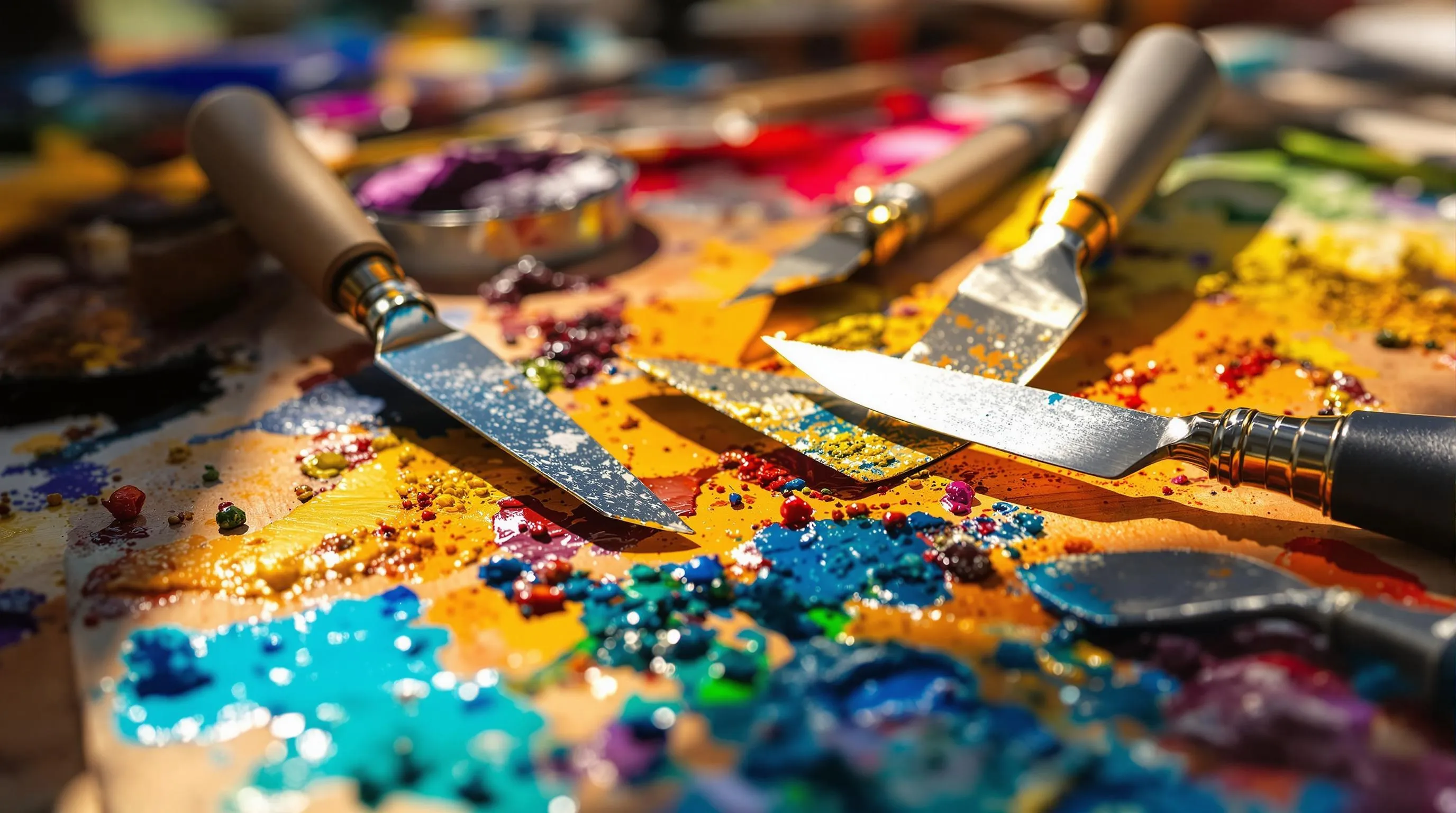
1. RGM 45 Palette Knife
The RGM 45 Palette Knife stands out as a must-have tool for acrylic painters due to its medium size and distinctive diamond-shaped design. Artists frequently praise its cranked handle, which provides exceptional comfort during extended painting sessions. This ergonomic feature allows for better maneuverability when creating textured effects or applying thick layers of acrylic paint. We’ve found this knife particularly effective for creating sharp edges and defined lines in industry paintings.
2. Diamond Head Palette Knife
Diamond Head Palette Knives come in a variety of sizes and tip shapes, making them incredibly versatile additions to any artist’s toolkit. These knives feature both rounded and pointed edges that adapt to different painting techniques and styles. Their design allows artists to cover large canvas areas efficiently while still maintaining the ability to create fine details when needed. Many professional artists keep several diamond head knives in their collection to accommodate various textures and effects.
3. Stainless Steel Palette Knife
Stainless Steel Palette Knives combine durability with excellent performance thanks to their metal heads and solid wood bases. The perfect balance between weight and flexibility makes these knives ideal for both mixing colors and applying paint smoothly onto the canvas. Their stainless steel construction resists corrosion from acrylics and cleaning answers, ensuring long-lasting performance. Artists particularly value how these knives maintain their shape even after extensive use with heavy-bodied acrylic paints.
4. Flexible Edge Palette Knife
The Flexible Edge Palette Knife features a long, supple blade that excels at scooping and mixing acrylic paints efficiently. Artists can navigate around their palette with ease, picking up precise amounts of paint without waste. This knife’s flexibility allows for creating subtle gradients and smooth transitions between colors. Professional painters often use this style for impasto techniques where a controlled application of thick paint creates dramatic textures and dimensions in the artwork.
5. Medium-Size Palette Knife Set
Medium-Size Palette Knife Sets offer excellent value for artists who want to experiment with various acrylic techniques without purchasing individual knives. These affordable collections typically include multiple shapes and sizes that cater to different painting applications. Available at local art stores and online platforms like Amazon, these sets provide beginners and experienced artists alike with comprehensive tools for texture creation. We recommend starting with a quality set to discover which knife shapes work best for your particular painting style before investing in premium individual pieces.
Best Palette Knife Sets for Beginners
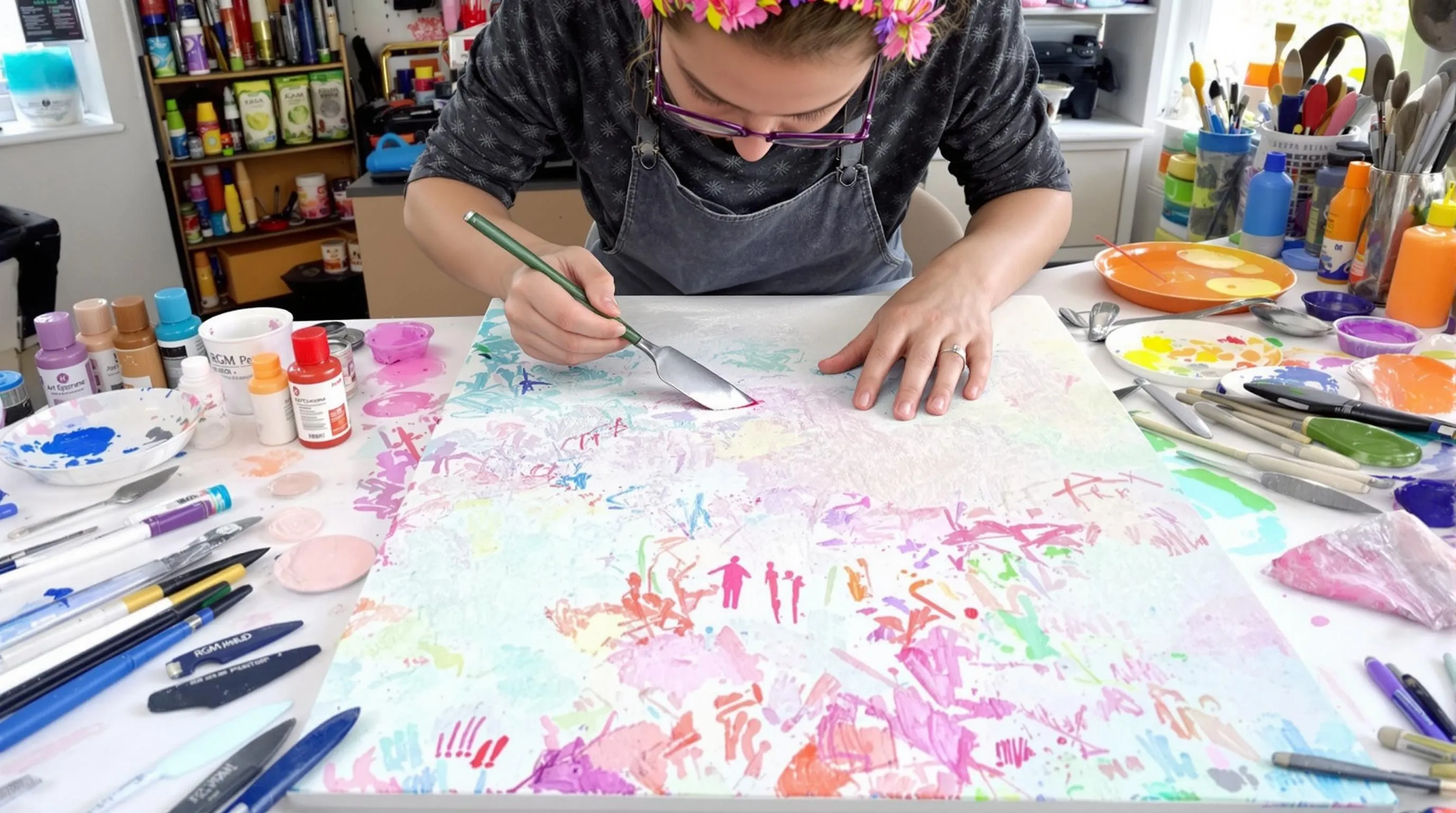
Starting your palette knife journey doesn’t require an extensive collection of specialty tools. We’ve found that beginners benefit most from sets that offer versatility without overwhelming options. Here are the best palette knife sets for those just beginning to explore this exciting painting technique:
Art Spectrum 1090 Series
Art Spectrum’s 1090 Series provides an excellent entry point for beginners with its flexible stainless steel blades. These Italian-made knives feature precise tips that allow new artists to create beautifully textured applications. The design is particularly suited for detailed oil painting work, making it easier for beginners to achieve professional-looking results without years of practice.
RGM Italian PLUS Painting Knives
For newcomers looking for quality and flexibility, RGM Italian PLUS knives offer exceptional value. Their spring steel construction provides just the right amount of responsiveness for learning different techniques. We particularly recommend starting with model #060 for round shapes, models #20 and #19 for detailed work, and model #22 for covering larger areas. This variety allows beginners to experiment with different strokes and textures while developing their style.
Liquitex Stainless Steel Set
Beginners often need sturdy tools for mixing colors before applying them to canvas. Liquitex’s Stainless Steel Set offers durable knives that excel at mixing paints, though they’re less flexible than specialized painting knives. This set functions primarily as traditional palette knives rather than painting tools, making them perfect for new artists who are still developing their color mixing skills.
Diamond Head Knives
Diamond Head Knives present an accessible option for beginners learning how to blend colors effectively. These user-friendly tools help newcomers achieve smooth transitions between colors such as brown and ultramarine. The even application these knives provide builds confidence in beginners who are still mastering consistent layering techniques.
Material and Flexibility Considerations
When selecting your first palette knife set, prioritize flexibility and blade shape over quantity. Individual quality knives like the RGM #060 often deliver better results than larger, less specialized sets. Spring steel offers the flexibility beginners need for controlled strokes, while stainless steel provides durability and precision that helps compensate for developing technique.
Remember that painting knives with offset handles (like those in the Art Spectrum 1090 series) allow for direct application and textured effects, while flatter-bladed palette knives (such as the Jade Tan spatula style) work better for mixing and spreading paint evenly across your palette.
Premium Palette Knives Worth the Investment
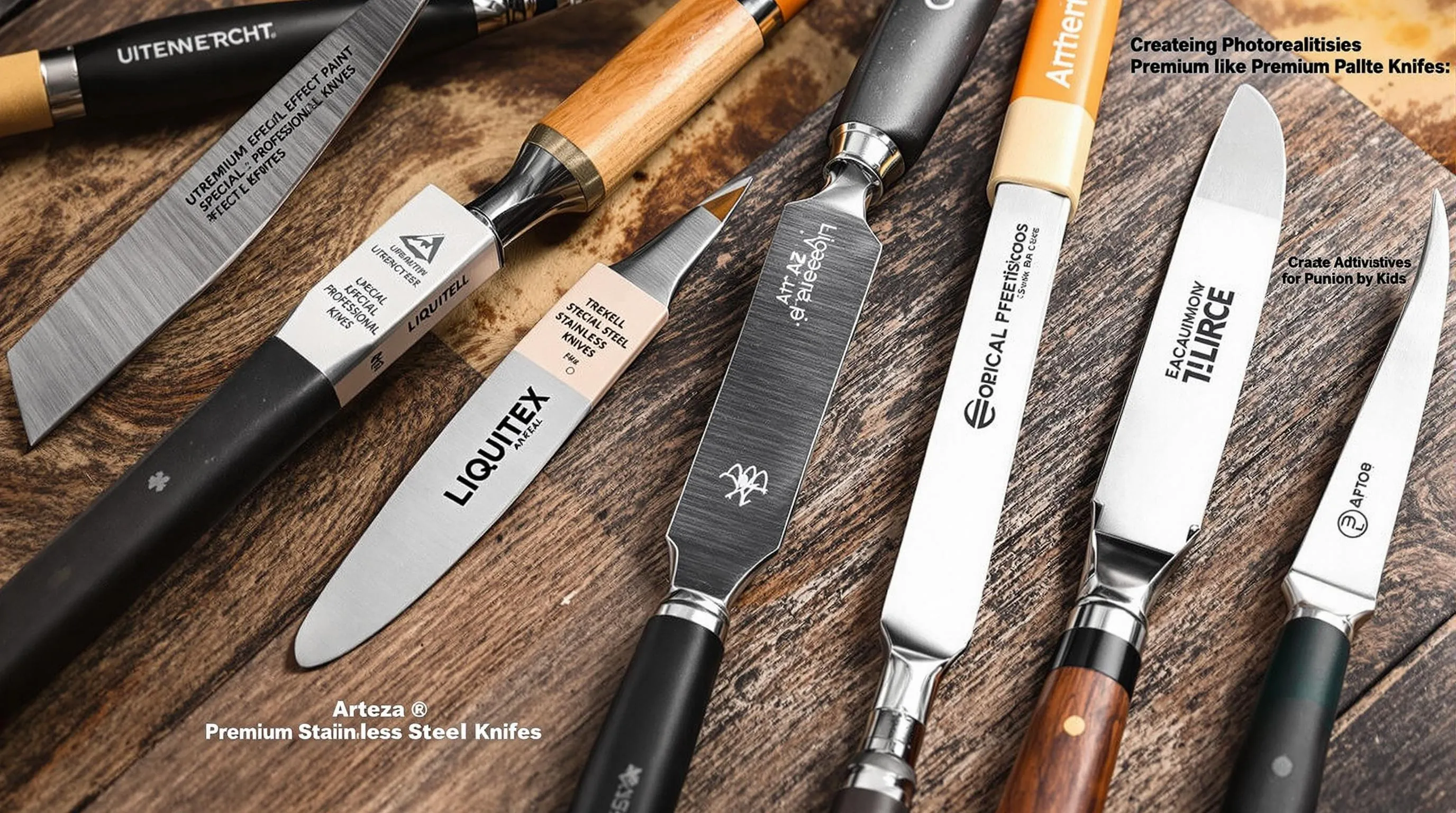
Utrecht Special Effect Knives
When searching for professional-grade palette knives, Utrecht Special Effect Knives stand out with their exceptional durability and specialized design features. These premium tools feature stainless steel blades that effectively resist corrosion and wear, making them ideal for long-term use with oils, acrylics, and gel mediums. Artists appreciate the ergonomically designed handles that significantly improve grip during extended painting sessions. The unique blade shapes available in this line allow for diverse texturing techniques and precise application that simply can’t be achieved with lower-quality alternatives.
Liquitex Professional Knives
Liquitex Professional Knives represent some of the finest palette knives on the market, combining high-grade stainless steel construction with innovative blade shapes. These knives excel at creating a wide range of artistic effects across various mediums, though they’re particularly well-suited for working with acrylics. Professional artists often gravitate toward these tools for their exceptional balance, weight distribution, and ability to maintain their shape even after extensive use. The investment in Liquitex knives pays dividends through consistent performance and reliable results in professional artwork.
Trekell Paint Palette Knives
Serious artists seeking premium quality should consider Trekell Paint Palette Knives with their stainless steel blades enhanced with electrolytic protection for superior durability. The rubber handles offer exceptional control during precise application techniques, reducing hand fatigue significantly compared to standard options. Trekell offers specialized shapes like the Thin Teardrop measuring 2⅛” in length, perfect for intricate detailing work that requires absolute precision. Their careful craftsmanship justifies the higher price point for professionals who demand consistency in their tools.
Arteza Stainless Steel Knives
Arteza’s premium knife offerings feature curved, warp-resistant stainless steel blades paired with comfortable wood handles for extended use comfort. These sets thoughtfully include both detailing and mixing blades, providing comprehensive options for various techniques in a single purchase. Artists particularly value the practical hang-up holes for convenient studio storage. The combination of professional-grade materials with thoughtful design elements makes these knives a worthwhile investment for artists looking to elevate their painting practice without compromising on quality or durability.
How to Choose the Right Palette Knife for Your Painting Style
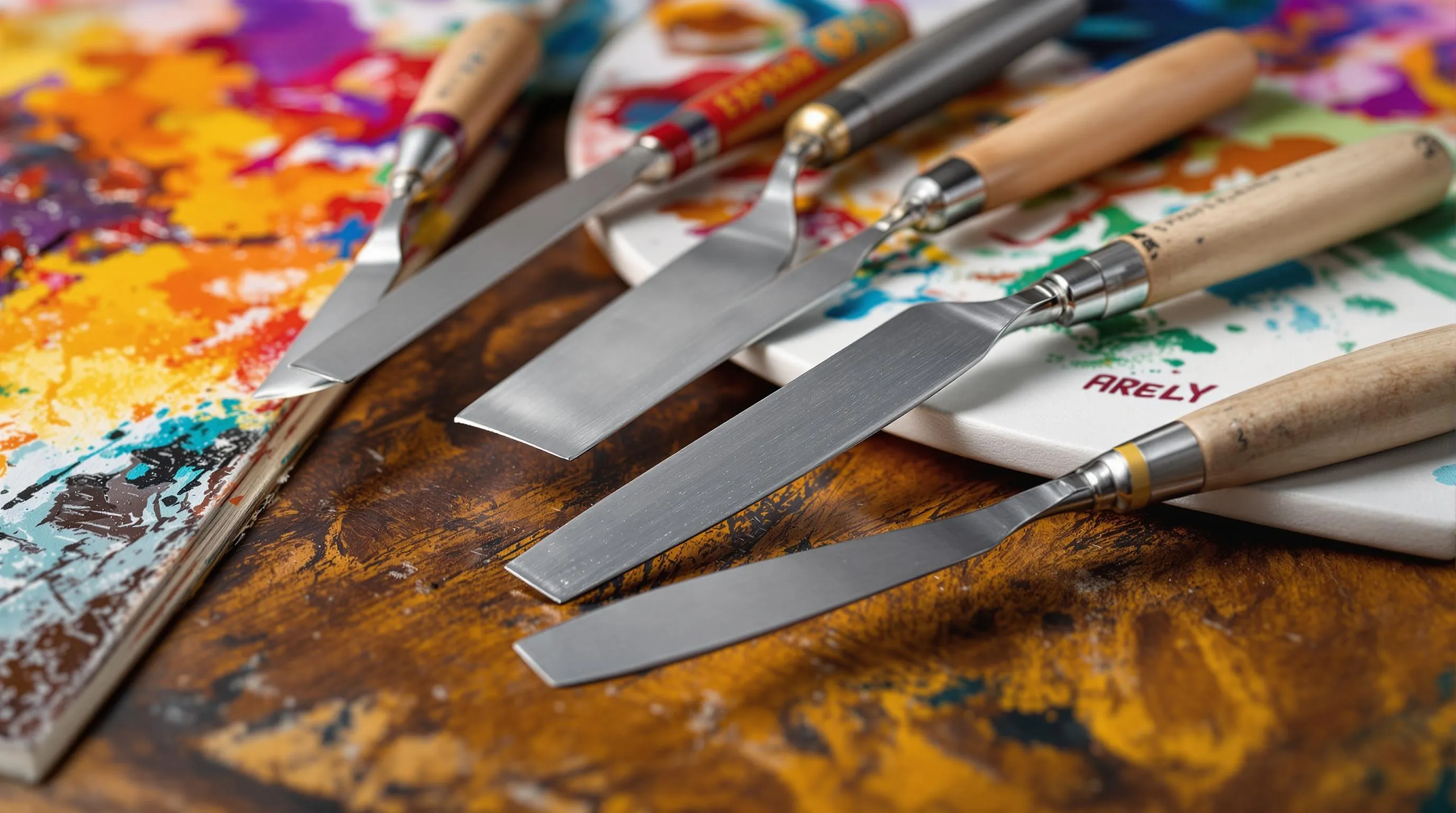
Selecting the ideal palette knife can dramatically transform your artistic technique and results. We’ve compiled essential considerations to help you find the perfect match for your unique painting style.
Consider the Blade Shape
Blade shapes significantly impact the techniques you can execute and the textures you can create in your artwork. Spatula-shaped knives provide straight edges ideal for mixing paint and creating smooth, even background layers. Trowel shapes feature wider, flatter blades that excel at applying thick, textured paint for bold impasto effects. Offset knives prove invaluable for scraping paint or accessing tight spaces where precision matters. Pointed tip or fan-shaped options deliver the fine control needed for detailed work or creating exact textures in your composition. Your artistic vision should guide your blade shape selection, as each profile unlocks different expressive possibilities.
Evaluate Handle Comfort and Materials
Handle design directly affects your painting comfort and control during extended studio sessions. Wooden handles offer a comfortable grip with a traditional feel that many artists prefer for lengthy painting sessions. Knives with stainless steel blades provide superior durability and significantly easier cleaning between color changes. Professional-grade palette knives typically feature ergonomic handle designs that prevent hand fatigue and allow for more precise control. The balance between handle and blade matters tremendously—a well-balanced knife feels like a natural extension of your hand, enabling more intuitive expression of your artistic vision.
Match the Knife to Your Medium
Different painting mediums demand exact knife characteristics for optimal results. Oil paint works exceptionally well with flexible knives that help thorough blending and mixing of thick, slow-drying pigments. Acrylic painters can use a wider variety of knife types since acrylics dry quickly and require less extensive blending techniques. The KTHE Palette Knife Set offers multiple shapes and sizes that accommodate both intricate detailing and broad, expressive strokes across different mediums. Blick Studio Palette Knife Sets provide an excellent balance between flexibility and strength, making them versatile choices for both oil and acrylic painting techniques. Your medium’s unique properties should guide your palette knife selection to achieve the best possible results in your artistic practice.
Maintaining and Cleaning Your Palette Knives
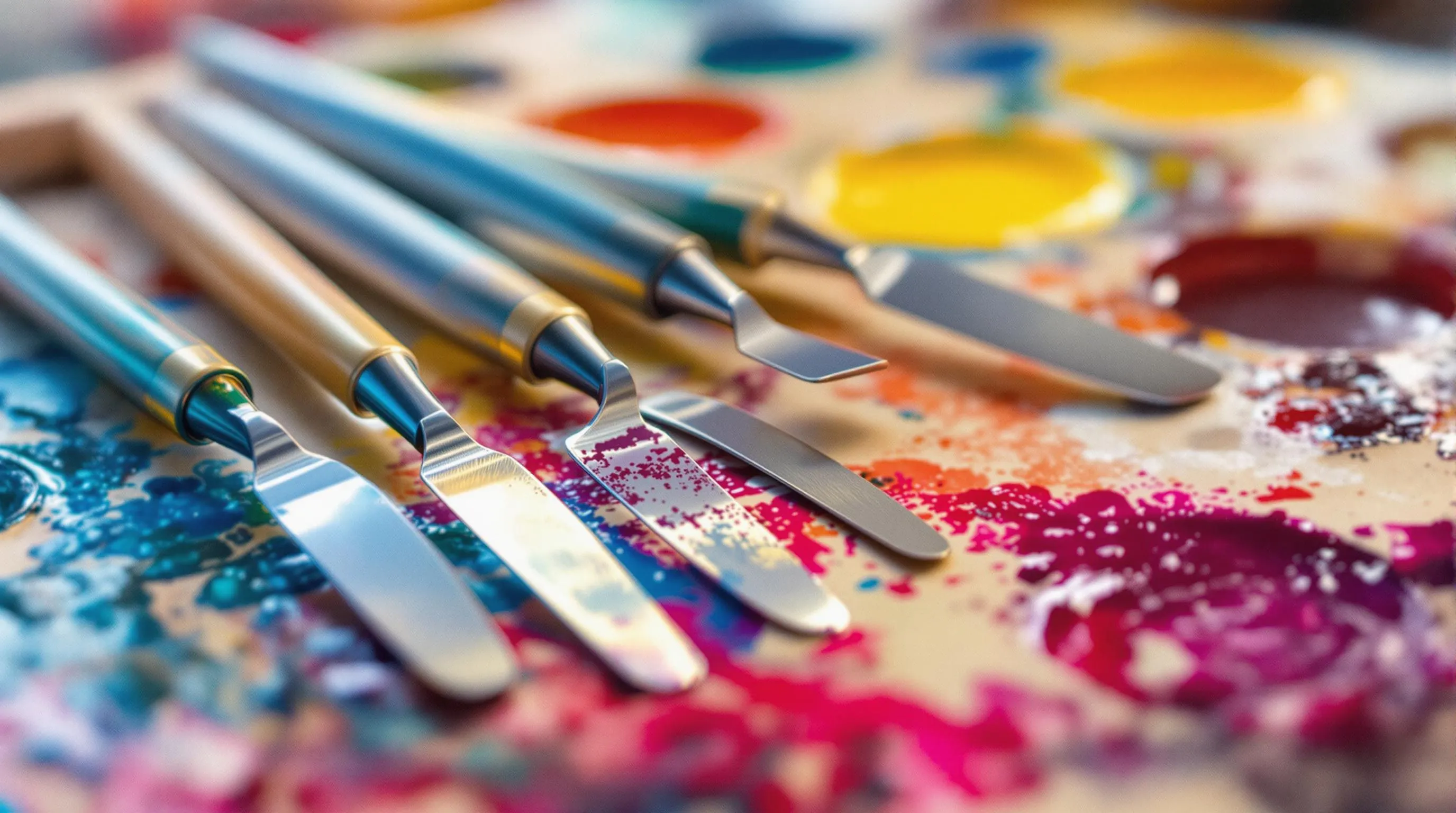
Proper maintenance of your palette knives is essential for their longevity and performance. We’ve compiled the most effective cleaning and maintenance practices to keep your painting tools in optimal condition.
Immediate Post-Use Cleaning
Always wipe excess paint from your palette knife with a cloth or paper towel immediately after use. This quick action prevents paint from drying and hardening on the blade, making subsequent cleaning much easier. Removing the bulk of the paint right away significantly reduces the time needed for thorough cleaning later.
Washing Techniques
Use warm soapy water with mild detergent for cleaning acrylic paint residue from your palette knives. For oil paints, mineral spirits provide the most effective cleaning solution to break down the oil-based pigments. Stainless steel blades like those found in Liquitex Professional and KTHE sets resist corrosion better during washing, making them particularly easy to maintain.
Proper Drying Methods
Thoroughly dry your palette knives after cleaning to prevent rust formation, especially if they’re not made of stainless steel. Carbon steel blades require particular attention as they’re more susceptible to corrosion when exposed to moisture for extended periods. Pat them dry with a soft cloth rather than air drying to minimize the risk of oxidation.
Storage Answers
Store your palette knives either flat or with handles up to protect their delicate blade edges from damage. Proper storage prevents warping and maintains the blade’s shape, ensuring consistent performance in your painting techniques. Keeping them in a dedicated storage case or holder can provide additional protection between uses.
Regular Inspection
Check your palette knives regularly for paint buildup or early signs of corrosion to ensure their longevity. This routine inspection allows you to address potential issues before they affect your knife’s performance. Particular attention should be paid to the junction between the blade and handle, where paint can accumulate unnoticed.
Maintenance Dos and Don’ts
Avoid using abrasive cleaners on your palette knives as they can damage both the blade’s edge and the handle’s finish. For wooden-handled knives like those in the Blick Studio set, occasional conditioning with linseed oil prevents the wood from drying out and cracking over time. Quality stainless steel knives from brands like KTHE and Liquitex require less intensive maintenance but still benefit from proper care.
Transforming Your Art: Palette Knife Techniques That Create Texture
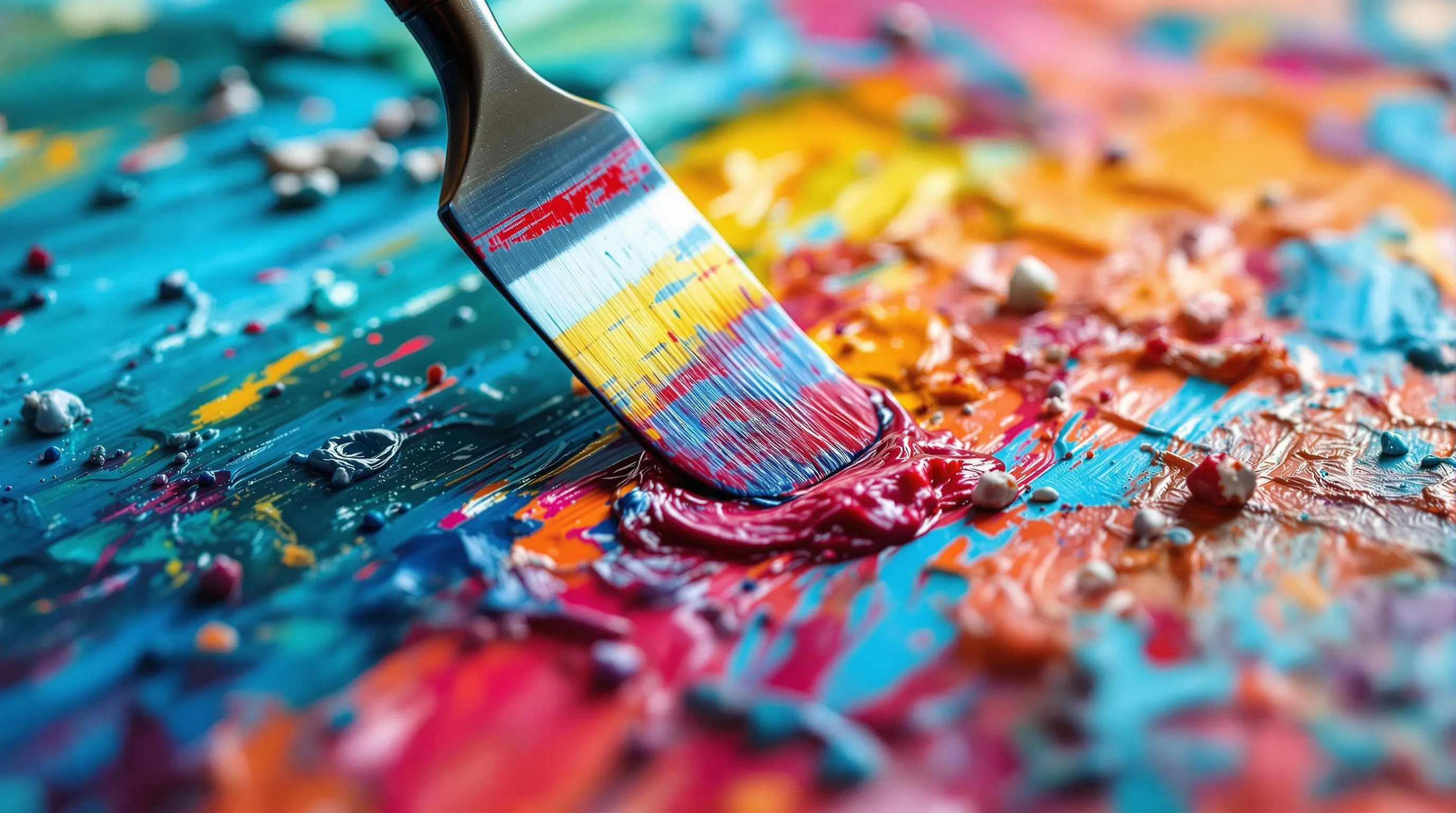
Palette knives offer artists unique ways to create textured effects that brushes simply cannot achieve. We’ve compiled essential techniques that will elevate your painting style and add fascinating dimensional qualities to your work.
Applying Thick Paint for Bold Textures
The flat edge of your palette knife serves as the perfect tool for spreading thick layers of paint. Creating textured backgrounds becomes effortless when you load your knife with generous amounts of paint and apply it with varying pressure. Artists often use this technique to establish ever-changing foundations in industry paintings, where textured skies or rugged terrain demands dimensional presence.
Blending Colors with Character
Unlike brush blending that often creates smooth transitions, palette knife blending produces more character-filled results. Dragging one color into another creates rough, scattered edges with unique visual interest. This technique works particularly well for creating natural elements like stone, water, or foliage where perfect blending would appear less authentic.
Scraping to Reveal and Refine
Palette knives excel as corrective tools through their scraping capability. Removing excess paint allows you to fix mistakes or intentionally reveal underlying layers for artistic effect. Many artists deliberately build up multiple paint layers specifically to scrape back and reveal glimpses of brilliant underpainting, creating depth impossible to achieve with brushes alone.
Creating Thin Lines and Details
Even though their seemingly blunt appearance, palette knives can produce surprisingly delicate effects. Loading just the edge of the knife with paint creates natural, broken lines with authentic character. These lines appear more spontaneous than brush-created lines, lending energy and movement to otherwise static compositions.
Layering for Dimensional Effects
Building up multiple layers of paint with your palette knife creates impressive dimensional effects. Each layer can be applied in different directions, creating a cross-hatched texture that catches light in fascinating ways. This technique proves particularly effective when working with thicker paints like oils or heavy-body acrylics.
Dabbing and Stippling Techniques
Touching the surface with just the tip of your palette knife creates interesting stippled effects. This technique works wonderfully for creating textural elements like foliage, stone surfaces, or weathered wood. The random, organic patterns created through dabbing introduce visual complexity that keeps viewers engaged with your artwork.
For artists looking to develop these techniques further, many online resources offer valuable demonstrations. YouTube tutorials provide hands-on visual guidance, while specialized art websites feature comprehensive guides from experienced palette knife artists who generously share their hard-earned expertise.
Conclusion: Elevating Your Artwork with the Perfect Palette Knife
Finding your ideal palette knife is truly a game-changer for your artistic journey. The right tool becomes an extension of your creative vision allowing you to express texture and dimension in ways brushes simply cannot.
Whether you’re drawn to traditional metal knives for their durability or specialized shapes for unique effects we’ve seen that quality materials and thoughtful design make all the difference. Remember that blade shape flexibility and handle comfort should align with your exact painting style and medium.
We encourage you to invest in the best palette knife your budget allows. Start with versatile options if you’re a beginner or consider premium tools if you’re ready to elevate your technique. With proper care and maintenance these essential tools will serve your artistic expression for years to come.
Frequently Asked Questions
What makes a quality palette knife different from a lower-grade one?
A quality palette knife typically features high-carbon stainless steel that maintains its shape longer and offers better paint manipulation. Professional-grade knives provide the right balance of flexibility and durability, with ergonomic handles to prevent hand fatigue during extended use. The material quality directly impacts your control, precision, and ability to express your artistic vision.
How does blade shape affect my painting technique?
Different blade shapes create distinctive marks and textures. Spatula-shaped knives excel at mixing colors, while trowel shapes are ideal for applying thick paint. Diamond shapes create sharp edges and precise details, and rounded shapes produce smoother transitions. Choosing the right profile depends on your artistic style and the specific effects you want to achieve in your work.
What are the best palette knives for oil painting?
Top recommendations include Trekell knives (ergonomic design, corrosion-resistant), Art Spectrum 1090 (precision blending), and Holbein MX Series (balance and durability). Various shapes serve different purposes: Long Spatula for wide strokes, Thin Teardrop for details, Wide Teardrop for coverage, Rounded Teardrop for smooth transitions, and Diamond Shape for defined edges and textures.
Which palette knives work best for acrylic painting?
For acrylics, consider the RGM 45 (ergonomic handle, sharp edges), Diamond Head (versatile sizes and shapes), Stainless Steel knives (durability), Flexible Edge knives (smooth mixing), and Medium-Size Palette Knife Sets for experimenting with various techniques. Acrylic painters often benefit from slightly more rigid knives compared to oil painters.
What should beginners look for in their first palette knife set?
Beginners should prioritize flexibility and versatile blade shapes without getting overwhelmed. Recommended starter sets include Art Spectrum 1090 Series, RGM Italian PLUS knives, Liquitex Stainless Steel Set, and Diamond Head Knives. Focus on quality over quantity—a few well-made knives often yield better results than larger, less specialized sets.
How do I properly clean and maintain my palette knives?
Clean knives immediately after use before paint hardens. Use warm soapy water for acrylics and mineral spirits for oil paints. Dry thoroughly to prevent rust, especially with carbon steel blades. Store knives with blade edges protected. Regularly inspect for paint buildup and corrosion. Avoid bending the blades or using excessive force when cleaning to maintain their shape and performance.
What unique textures can I create with palette knife techniques?
Palette knives create effects brushes cannot achieve, including: applying thick paint for bold textures, blending colors with character, scraping to reveal underlying layers, creating thin precise lines, layering for dimensional effects, and dabbing for stippling textures. These techniques add visual interest and tactile qualities to paintings that distinguish knife work from brushwork.
Should I invest in premium palette knives?
Premium palette knives like Utrecht Special Effect Knives, Liquitex Professional, Trekell, and Arteza Stainless Steel offer superior durability, balance, and ergonomic design that justify their higher price for serious artists. Quality knives reduce hand fatigue during long sessions, maintain their shape better, and provide more consistent results. For professionals or dedicated hobbyists, this investment typically pays off through improved performance.


